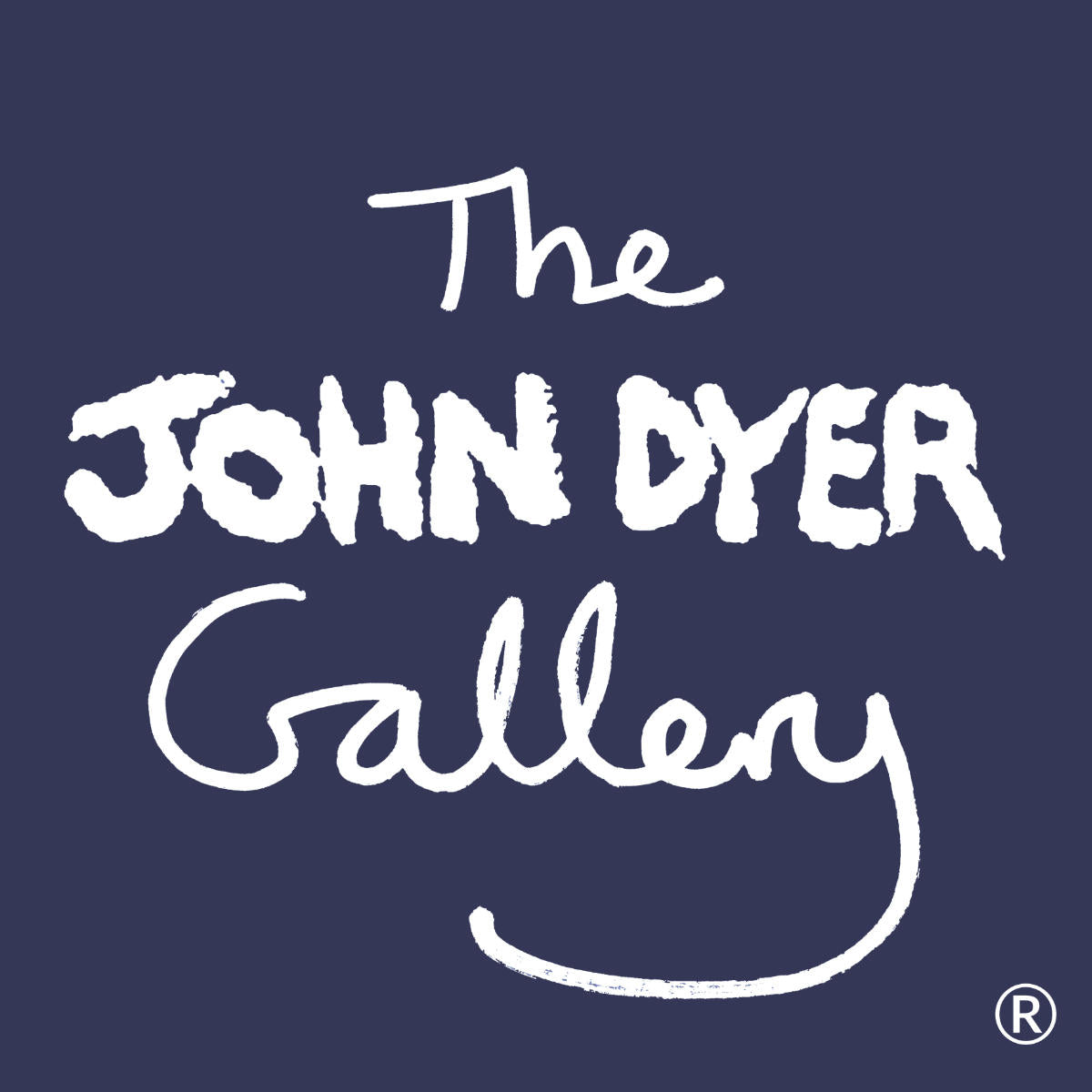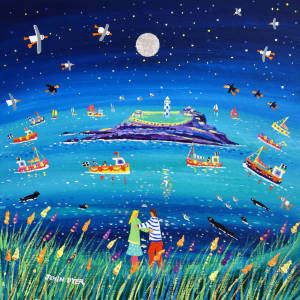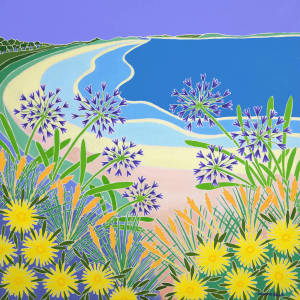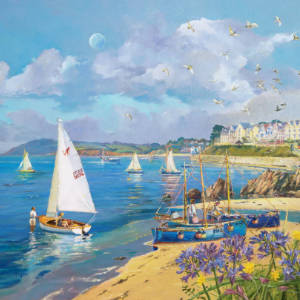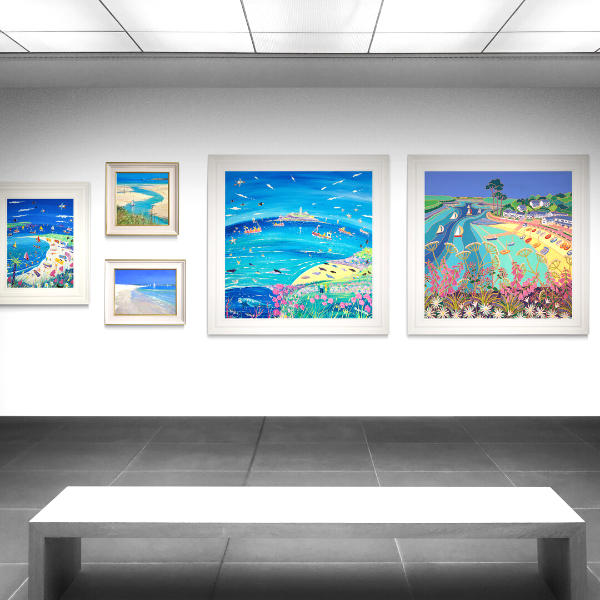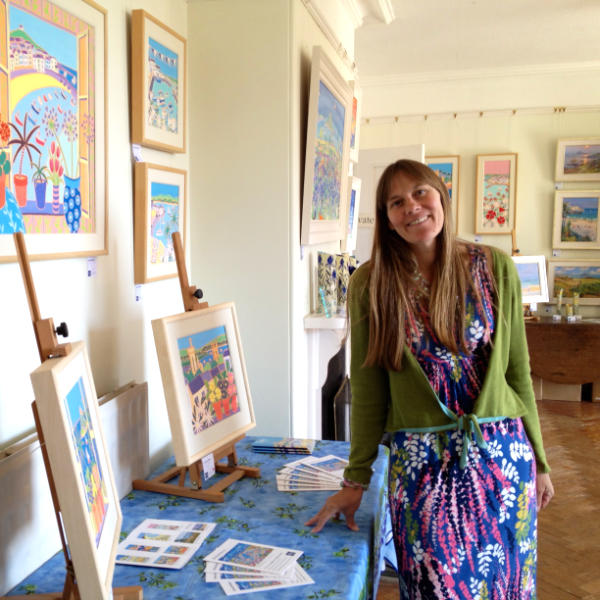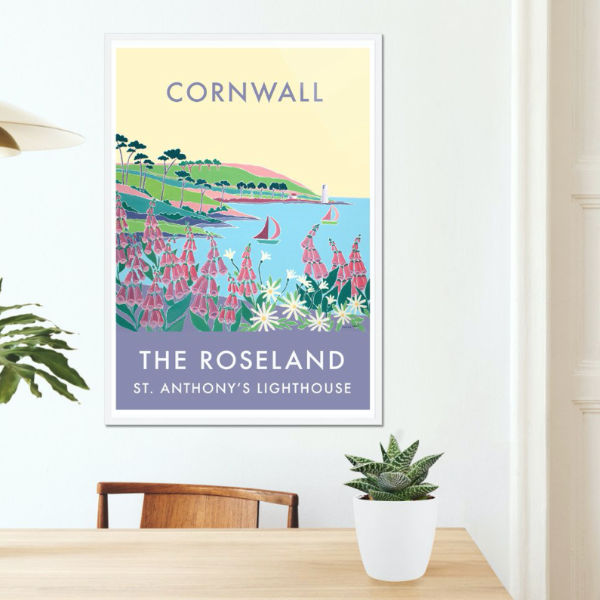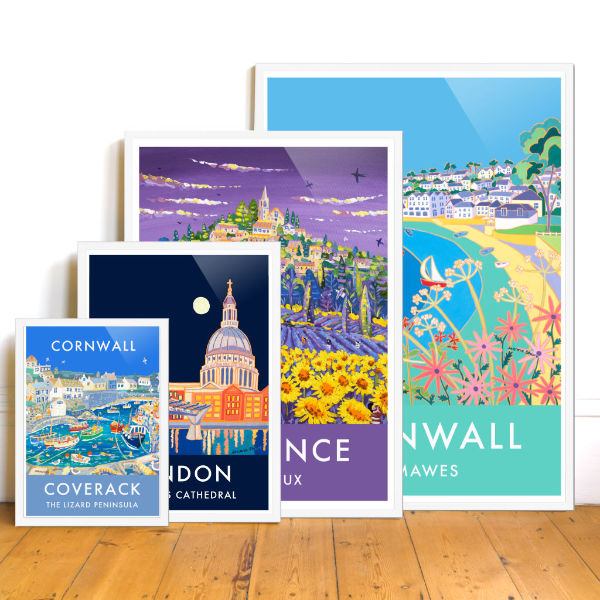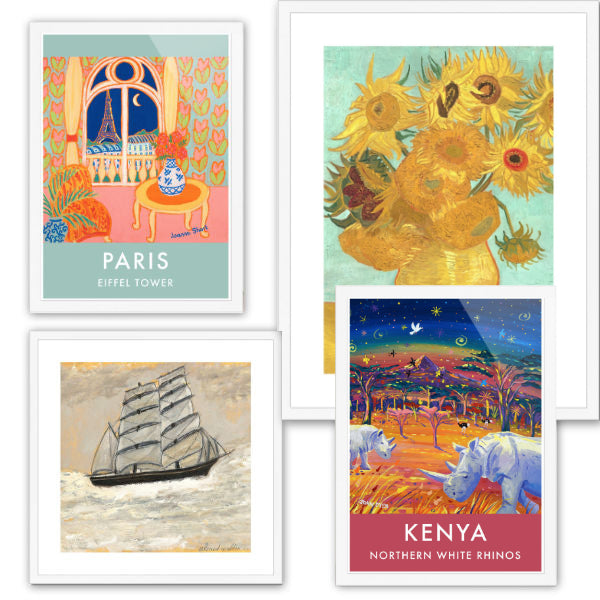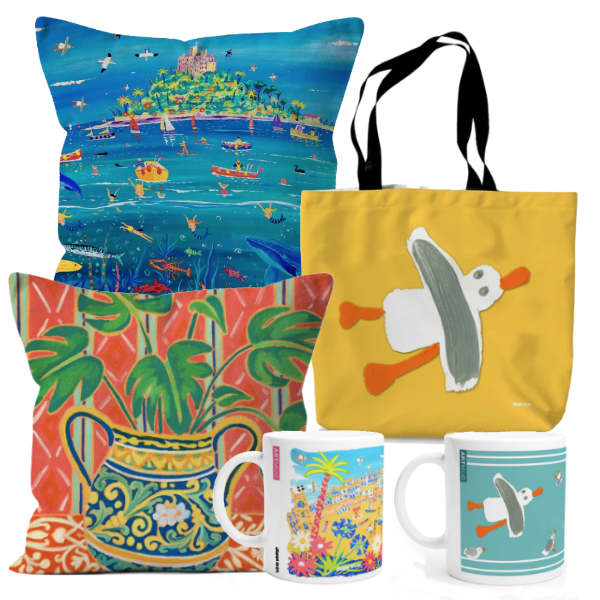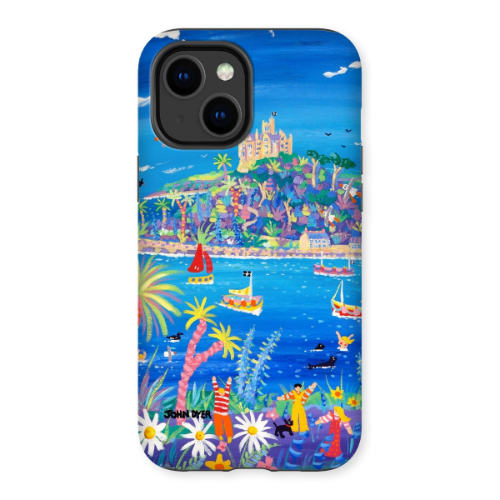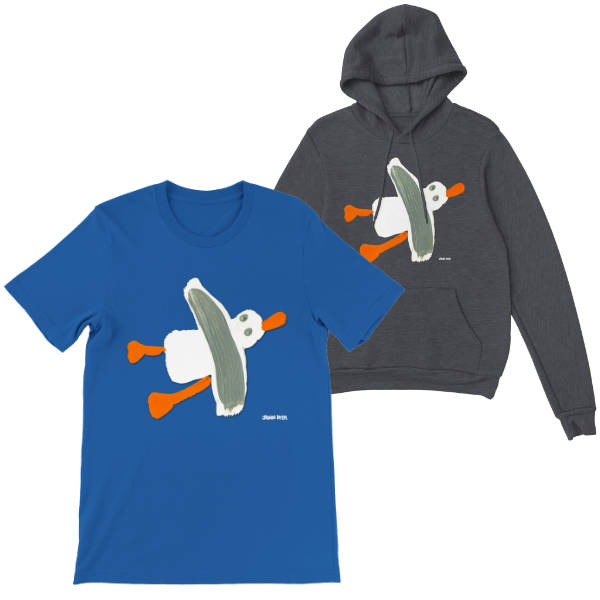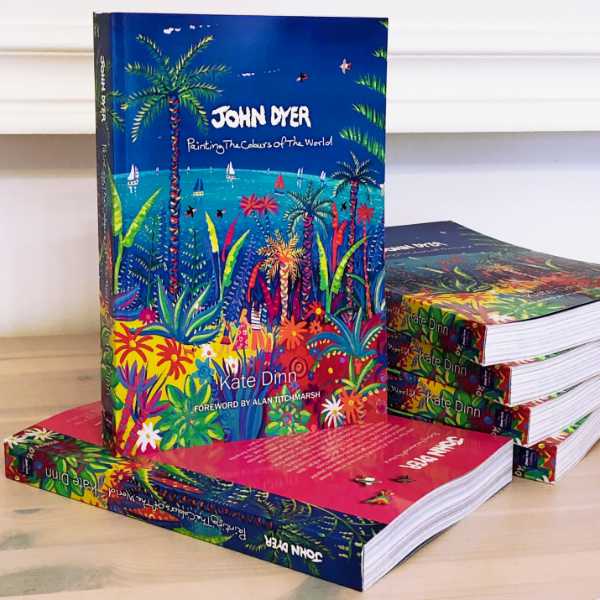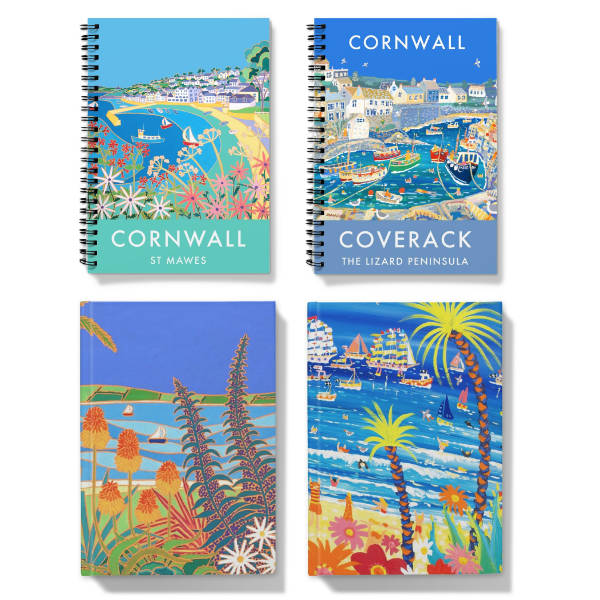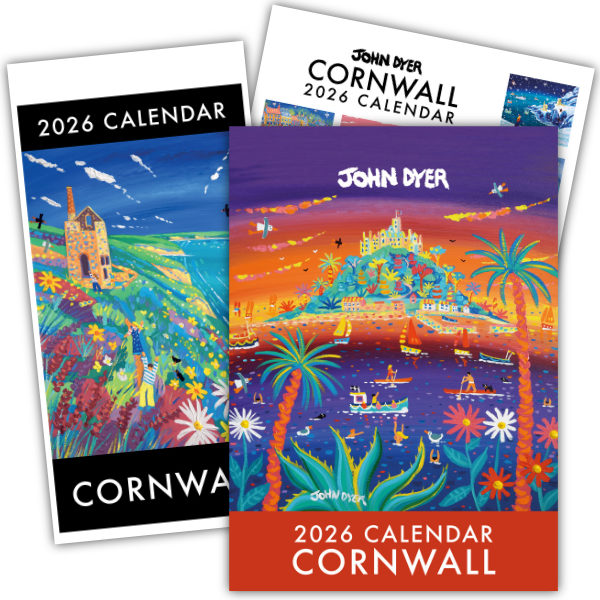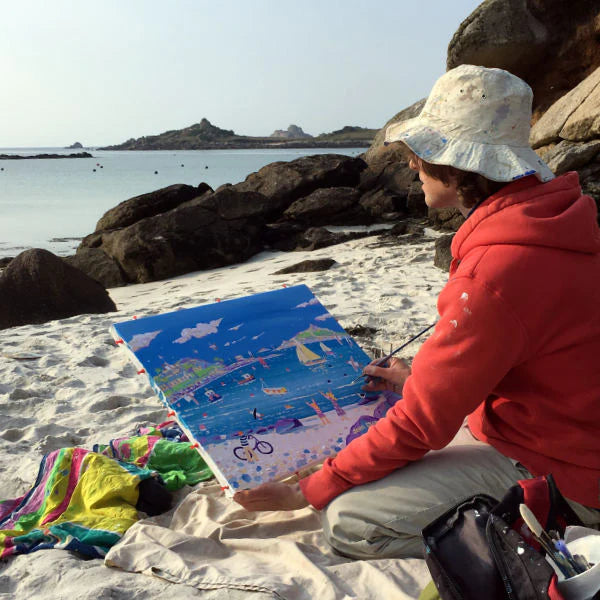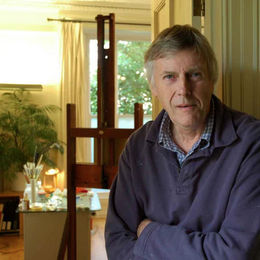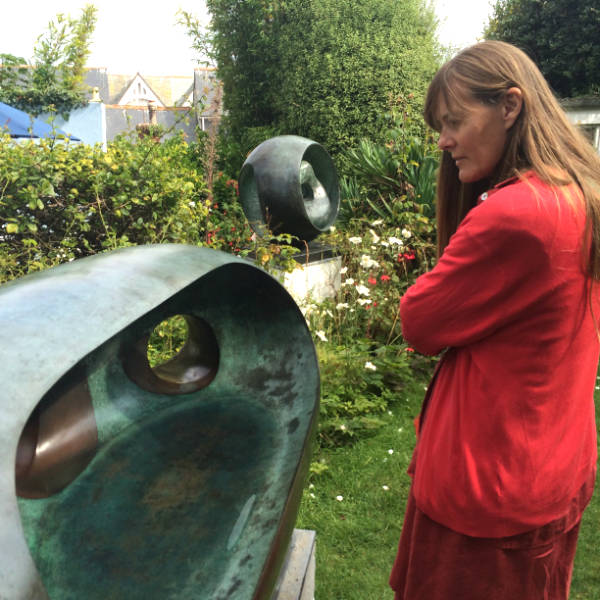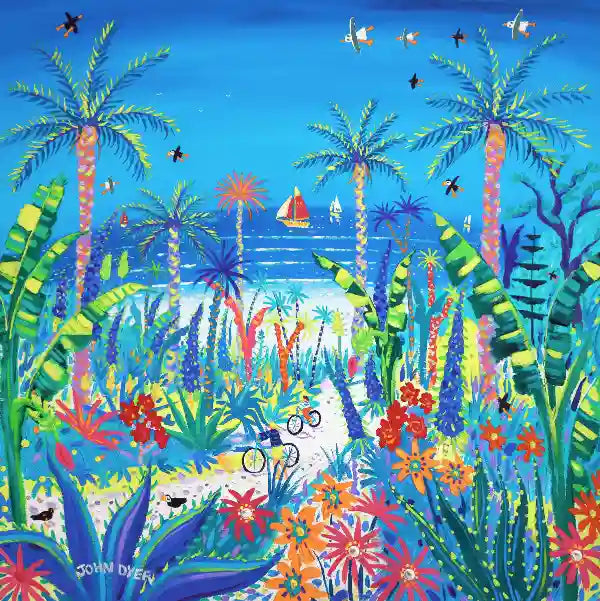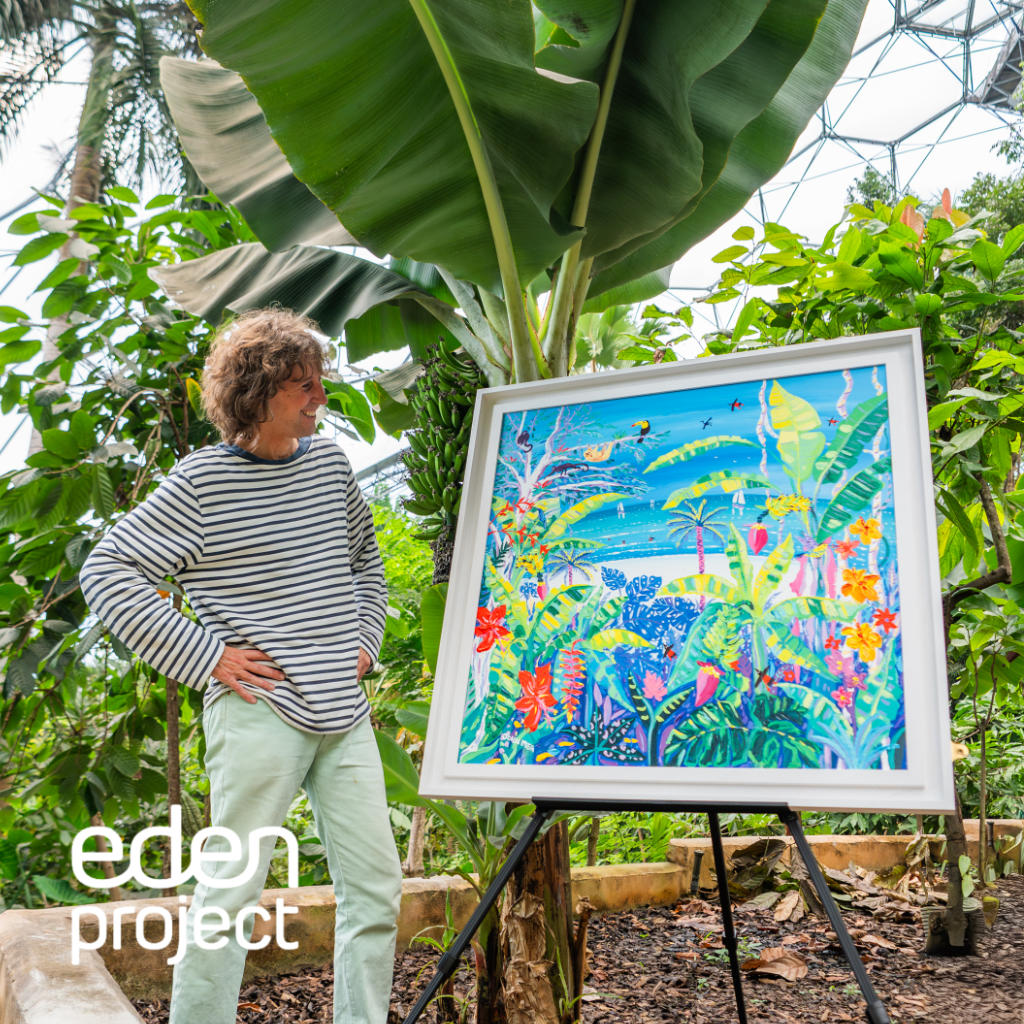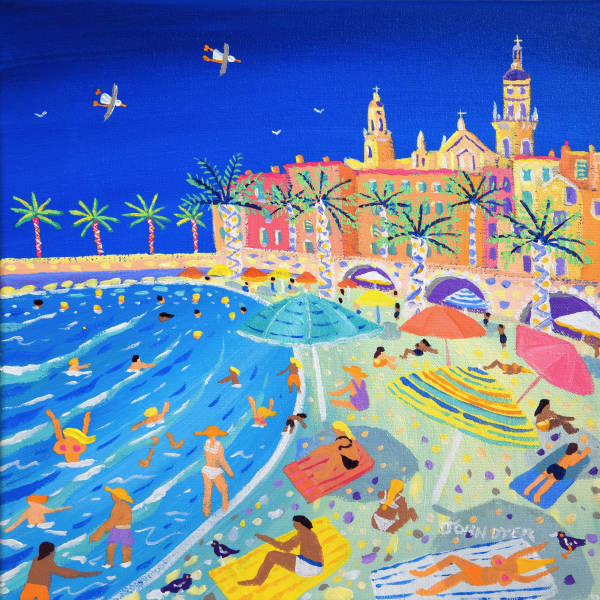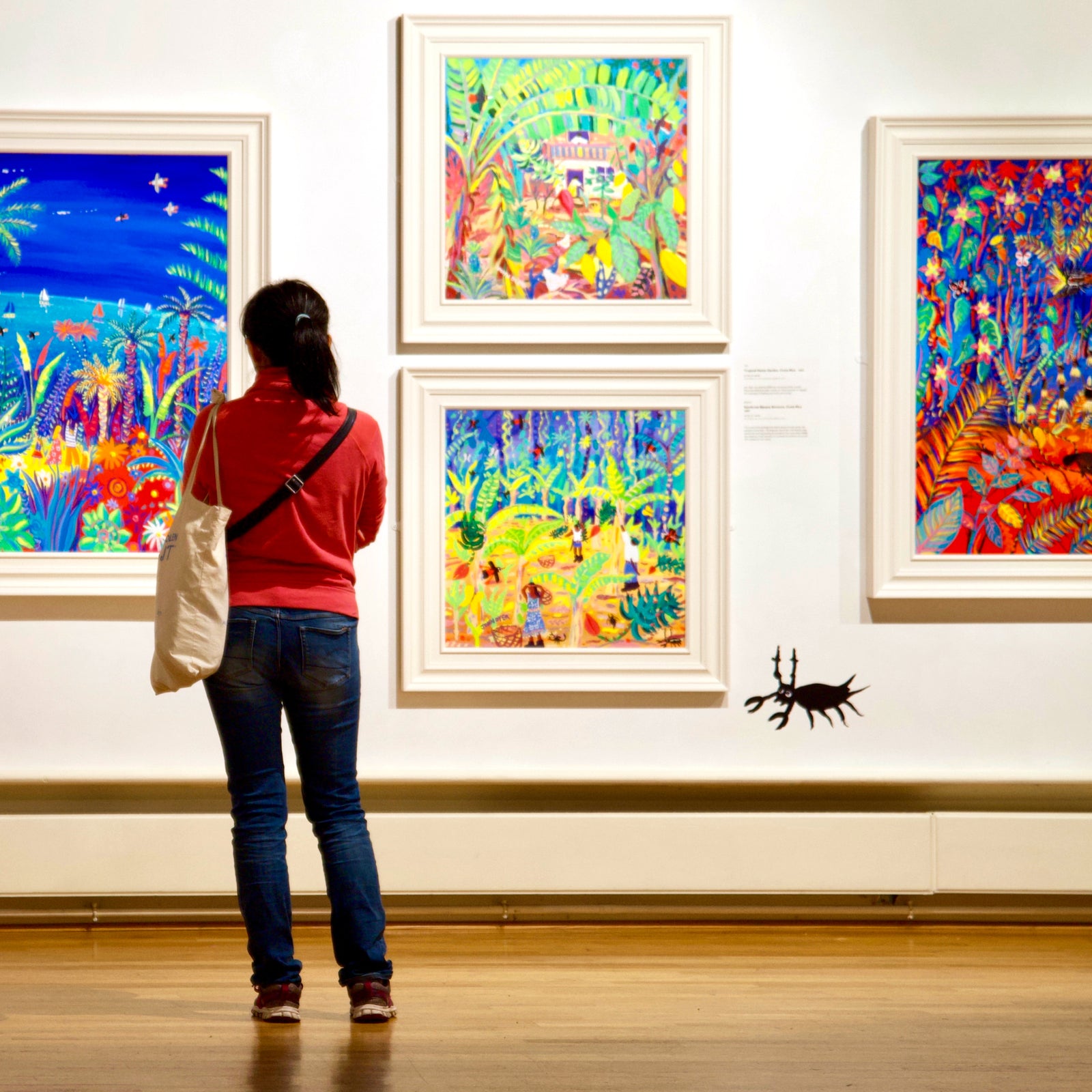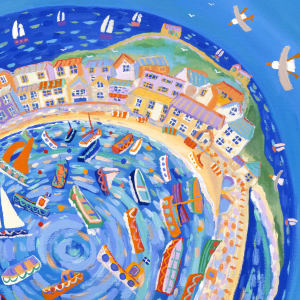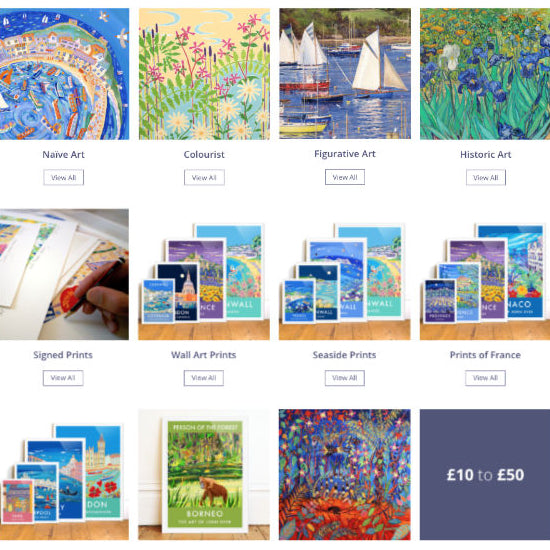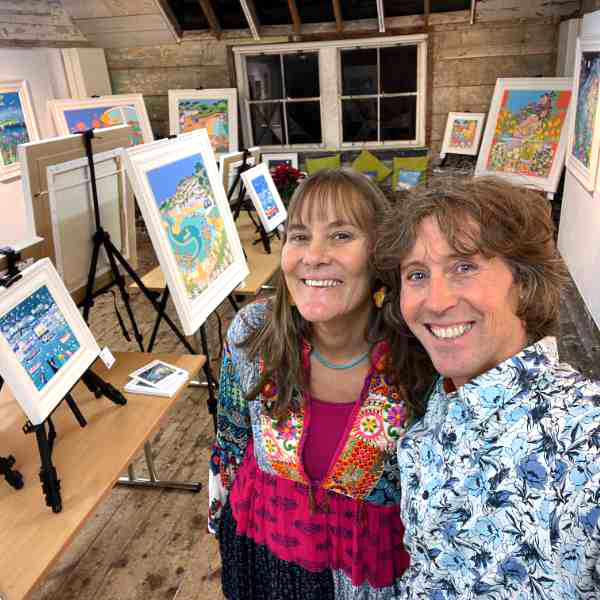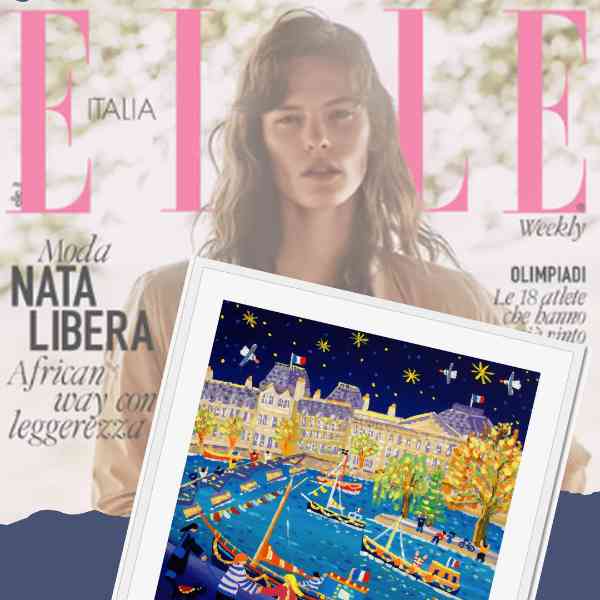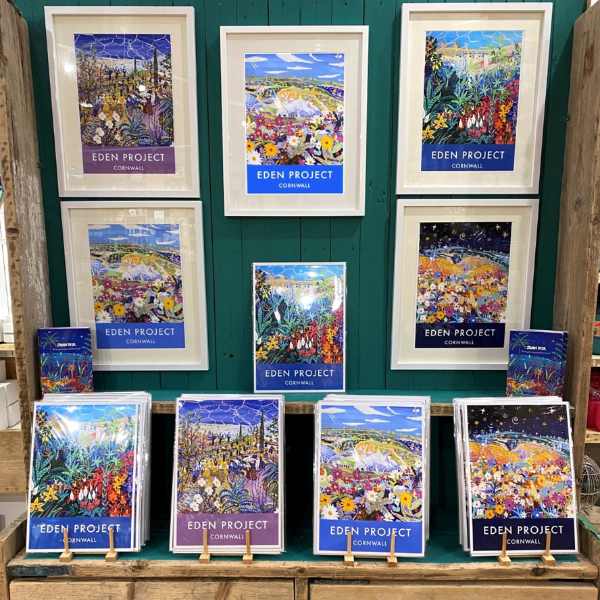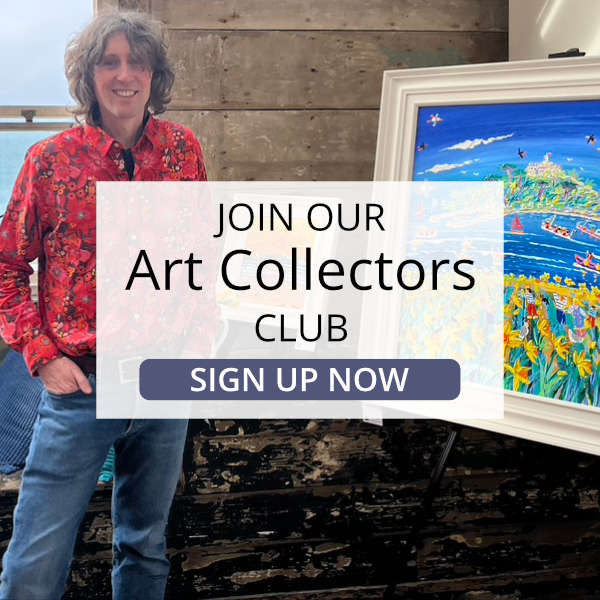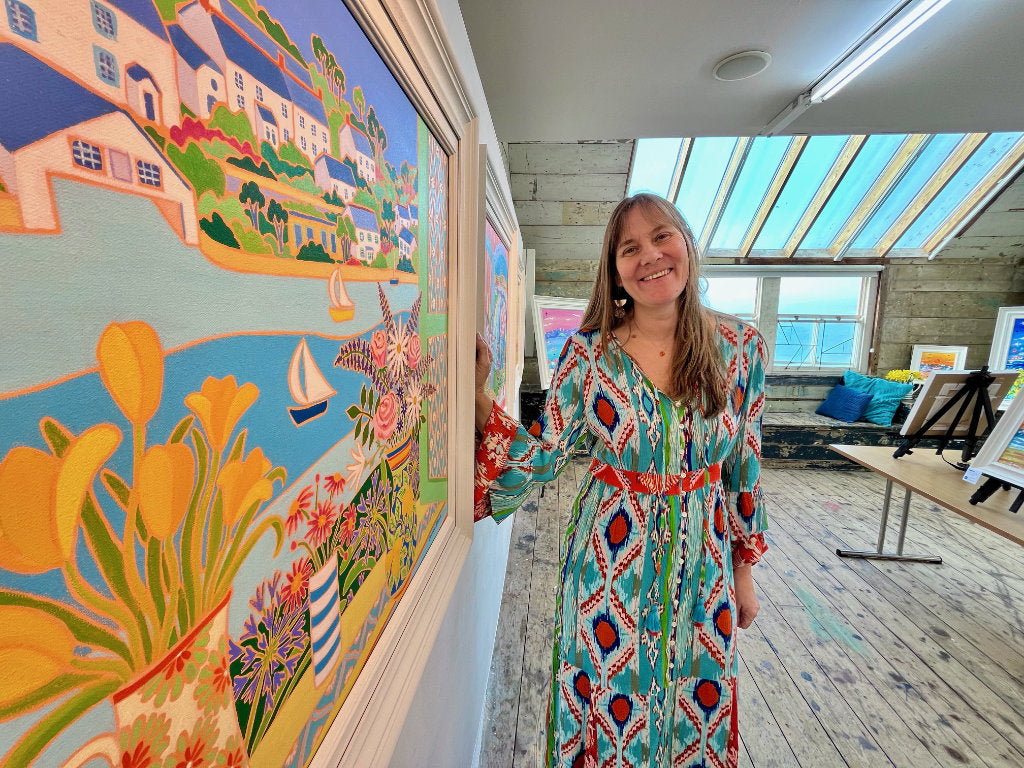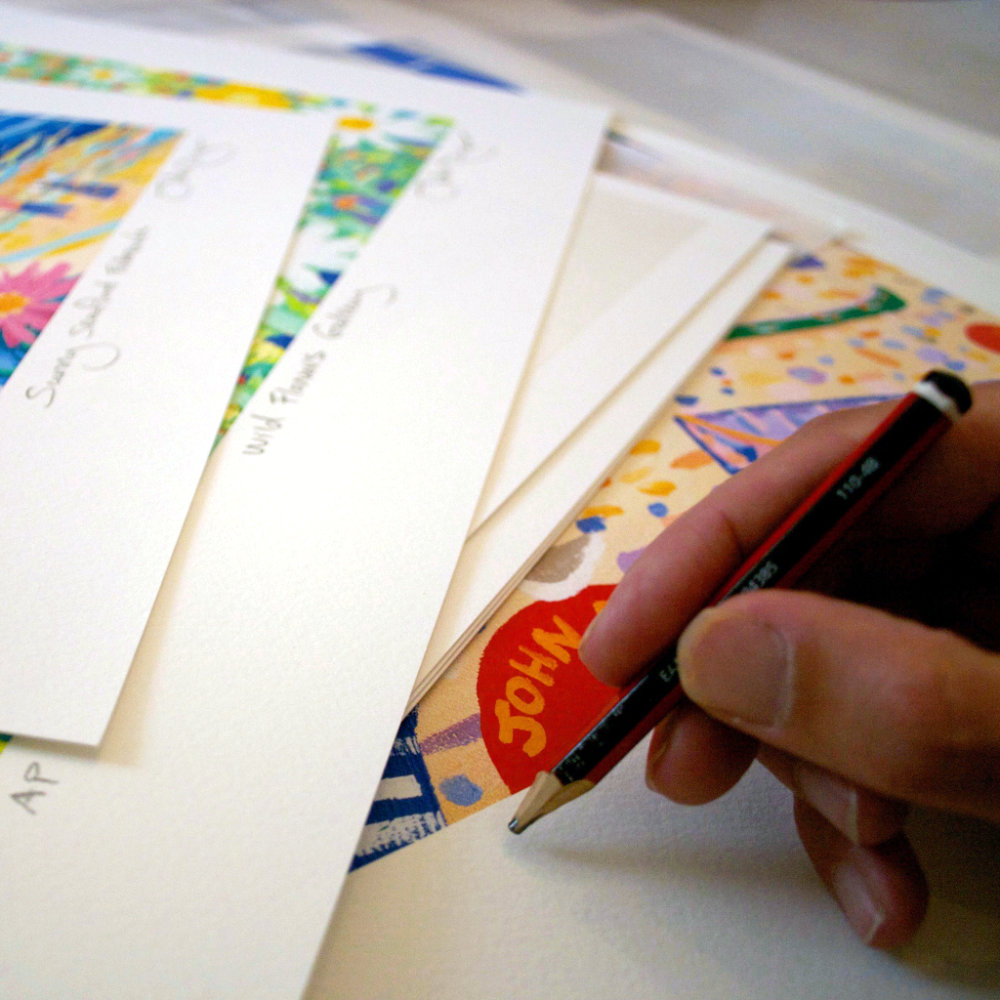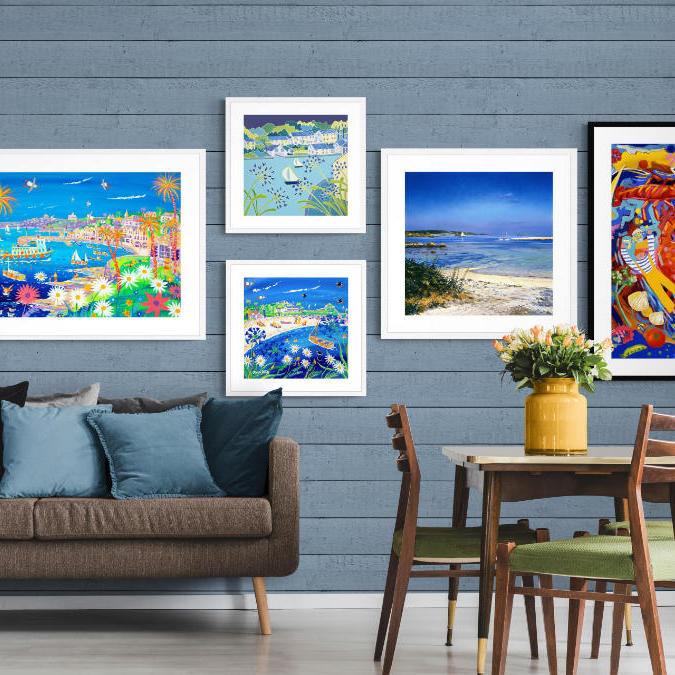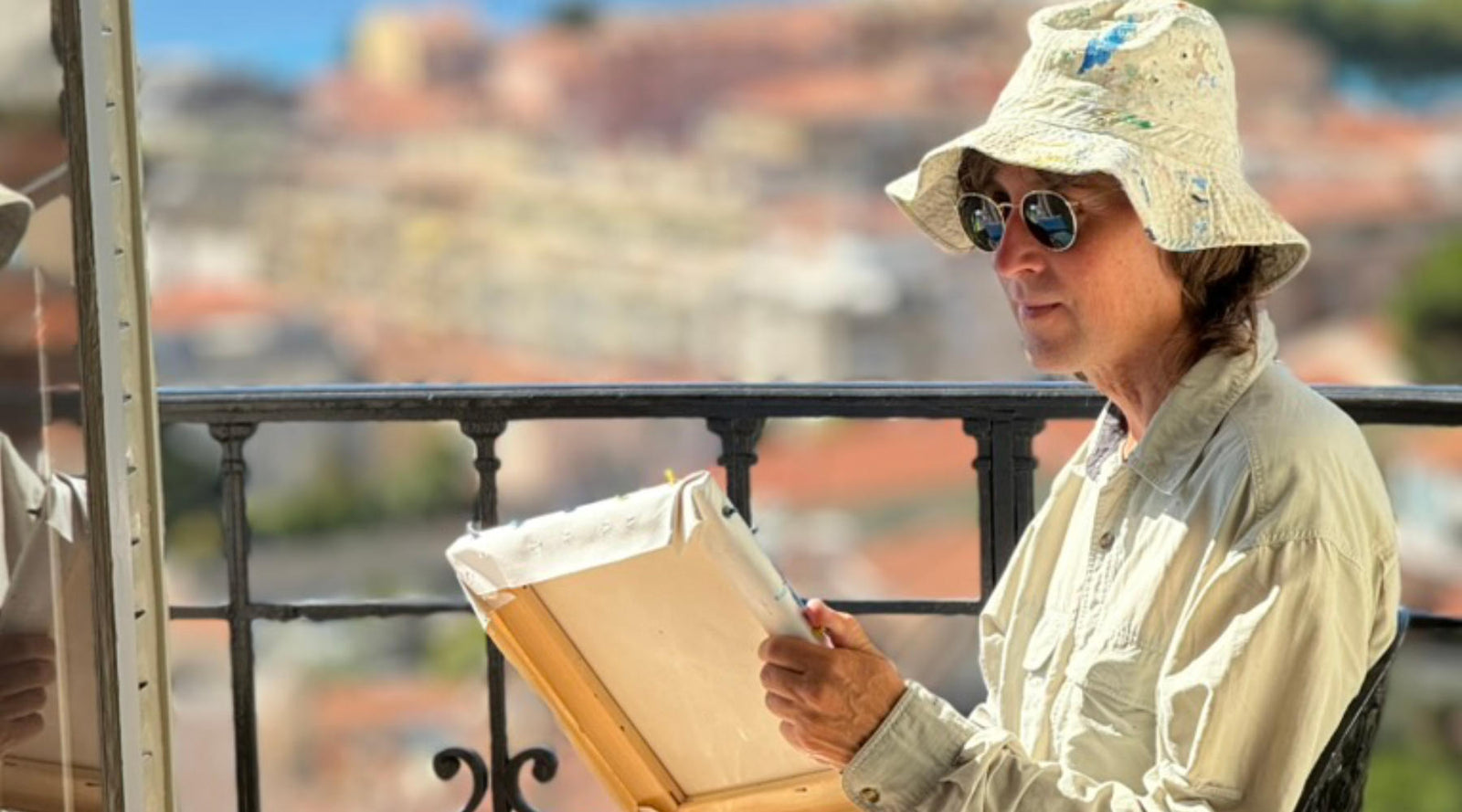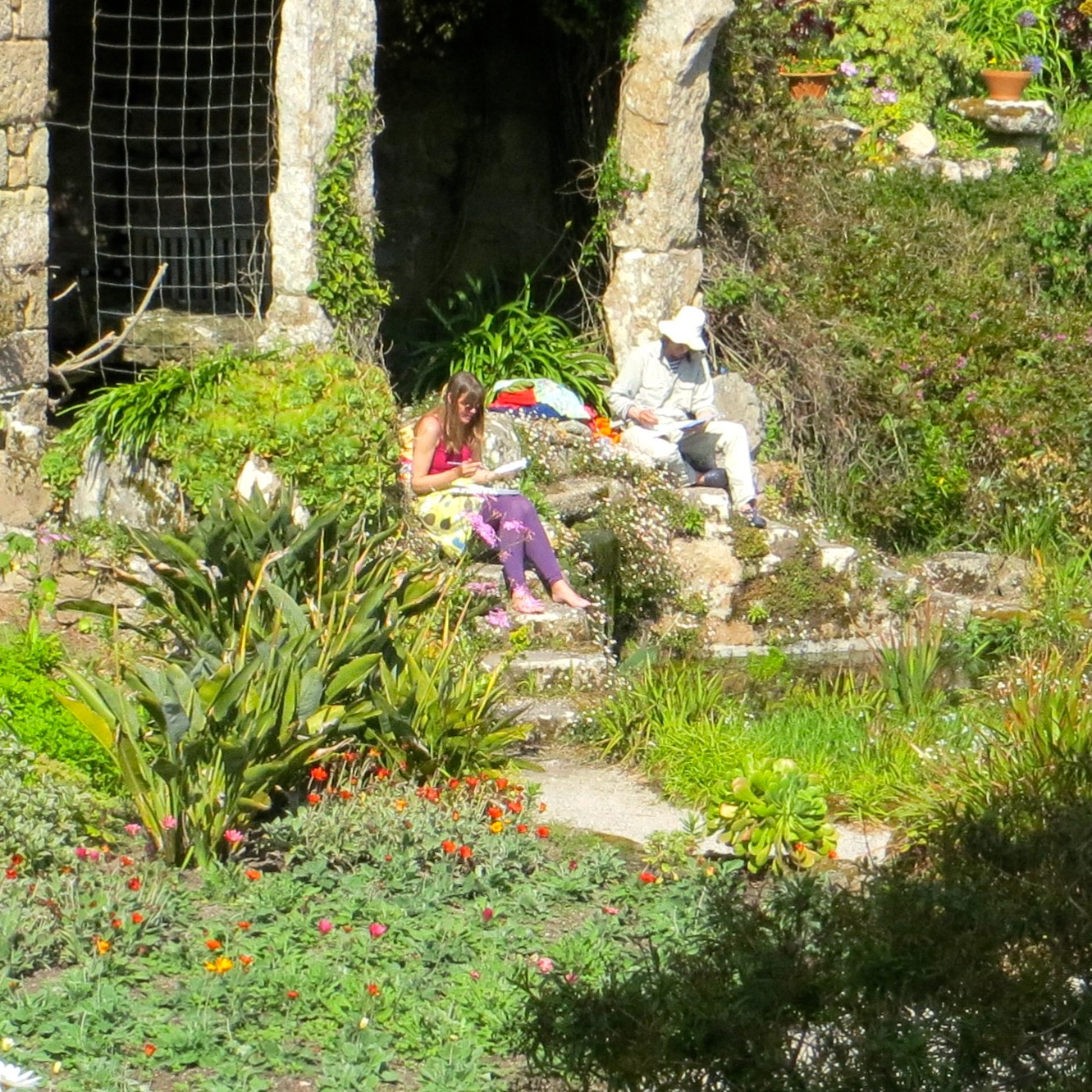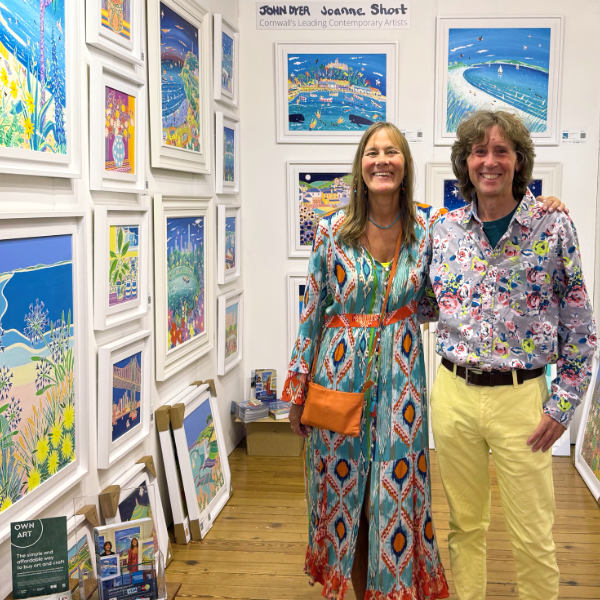
Above: Detail from the limited edition print by Cornish Artist John Dyer. 'Stunning View, St Ives'. Buy online.
The seaside town of St Ives, Cornwall, has been a popular destination for artists since the 1800s. The soft light and dramatic scenery have drawn painters, photographers, and sculptors to the town to capture its beauty on canvas and in sculpture. In this blog post, we will take a look at the history of British art and painting in St Ives and the artists who were drawn to its unique landscape. It's an incredible place with a rich history and beautiful scenery.
Above: 'The Royal Visit, St Ives'. Painting by Cornish artist Ted Dyer. Available as an open edition art print.
In the late nineteenth century, The Great Western Railway arrived in west Cornwall. This meant that many more visitors came to this quaint coastal town and many artists were made aware of the beauty of the Cornish coast as they visited St Ives and the surrounding area.
Why is St Ives popular with artists?
The light in St Ives is said to be unlike anywhere else in the world. The town is situated on the west coast of Cornwall, facing out towards the Atlantic Ocean. This means that it benefits from softer, more diffuse light than other parts of the country. The light is also said to change rapidly, creating different effects and shadows as the day goes on. For painters, this ever-changing light can be both a challenge and an inspiration.
Another factor that makes St Ives popular with artists is its dramatic landscape. The town sits on a rocky peninsula, surrounded by cliffs, beaches, and the turquoise waters of St Ives Bay. This provides plenty of subject matter for paintings and sketches.
St Ives Society
On January 26, 1927, Commander George Fagan Bradshaw proposed the formation of a society dedicated to raising the standards of art in the colony and exhibiting works that would be respected by other artists. Lanham's Gallery was the first home of this new Society, but by 1928 it had moved to Julius Olsson's old studio in Back Road West.

Above: 'Lobster Fishing'. George Fagan Bradshaw (1888–1961)
All of the studios were put up for sale in 1971, and Moffat Lindner bought the entire block to avoid them being turned into shops. Borlase Smart stated that Lindner had prevented what might have been a fatal crisis in St Ives' art history.

Above: 'Lanhams Framing Workshop, St Ives'. Leonard John Fuller (1891–1973)
Lindner was very supportive and enabled the Society to continue renting Olsson’s studio at a reduced rate. In 1932, due to the growth of the Society, Lindner rented out the adjacent studio (number four) as well. He also became President of the Society and held this position for eighteen years.
Many Royal Academicians became members of this new Society: the leader of the Newlyn School, Stanhope Forbes, Lamorna Birch, Dame Laura Knight, Dod Proctor, Borlase Smart and many more notable artists from west Cornwall.
St Ives School
The small fishing town of St Ives has a long association with art and artists living there. In the early 20th century, a group of painters who resided and worked in the town of St Ives became known as the 'St Ives School'. Artists Borlase Smart and Leonard Fuller were founder members who vowed, while fighting in the first world war, that they would set up a painting school in Cornwall.
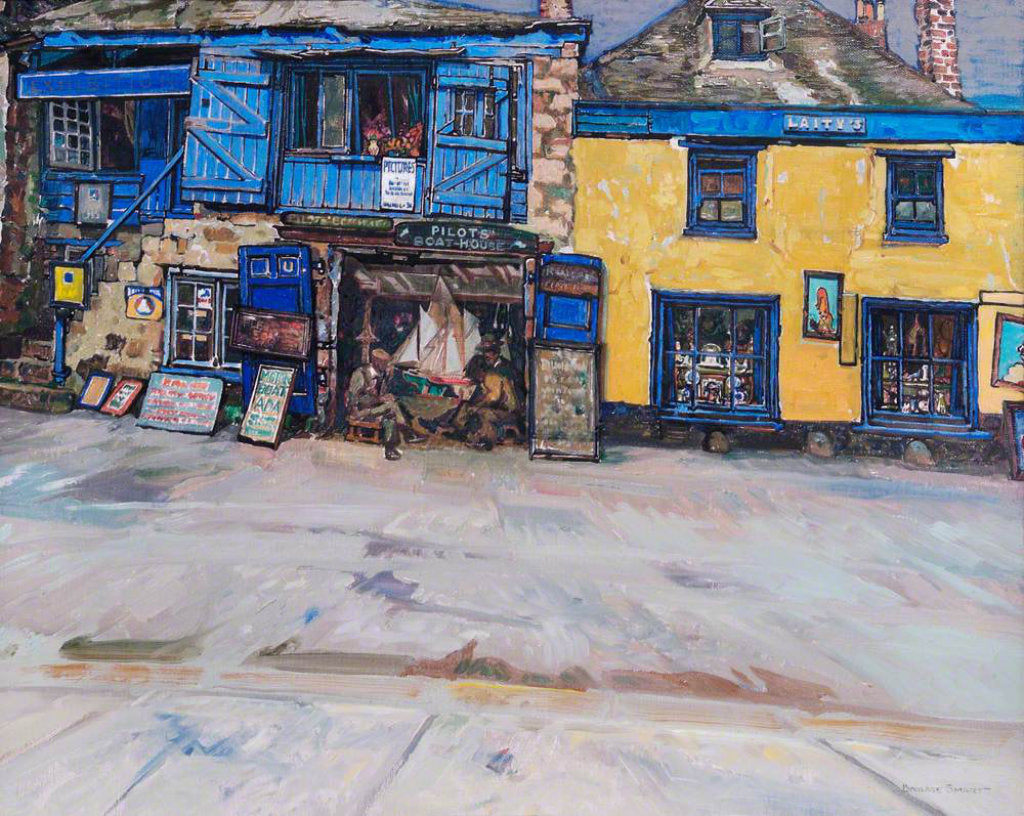
Above: 'The Pilot's Boathouse, St Ives'. Robert Borlase Smart (1881–1947)
This group of St Ives artists developed a distinctive style of painting which was influenced by Impressionism and Post-Impressionism. They were drawn to St Ives because of its soft light and clear sea. Much of St Ives School art was created in studios overlooking Porthmeor Beach, where artists would paint every day. These studios called the 'Porthmeor Studios' have been renovated and are still in use today.

Above: 'Autumn Sunshine'. Leonard John Fuller (1891–1973)
What is the St Ives group?
The St Ives group was a collective of artists who were drawn to the town of St Ives just before and immediately after the second world war, because of its soft light and bright blue seas. The group included painters, sculptors, and printmakers who worked in a variety of styles, but shared an interest in abstraction and working with nature.
Although their methods were varied, the group was united in a deep appreciation of their particular environment. They played key roles in the creation of long-lasting advances in British and European modernism by incorporating influences from previous and contemporary international aesthetics.
Some of the most famous members of the St Ives group are Ben Nicholson, Barbara Hepworth, and Naum Gabo. These artists helped put St Ives on the map as a hub for modernist art in Britain.

Above: 'Red Stone'. Naum Gabo (1890–1977)

Above: 'St Ives - Oval and Steeple',1951. Ben Nicholson (1894–1982)
Despite its small size, St Ives has had a big impact on the world of art. Its idyllic setting and community of artists have inspired generations of painters, sculptors, and printmakers. And its legacy continues to this day - in 2017, the Tate St Ives reopened after a major expansion, and it is now one of the most popular tourist destinations in Cornwall.

Above: 'Wave'. Barbara Hepworth (1903–1975)
The Tate St Ives
The Tate St Ives is one of the most important museums in the country for modern and contemporary cornish and British art. It was opened in 1993 and houses a collection of work by St Ives artists who have lived and worked in the town, including Ben Nicholson, Barbara Hepworth, and Roger Hilton. The museum also has a programme of temporary exhibitions which showcase work by international artists.

Above: 'Enjoying the Beach, Ignoring the Tate' 1993, painting by John Dyer which features in the John Dyer book 'Painting the Colours of the World'.
The Tate is located on Porthmeor Beach, where many of the town's artists used to paint. The building itself is designed to echo the shape of a wave, with its curved walls and roof. From the outside, it offers stunning views over Porthmeor Beach and across to Godrevy Lighthouse. Inside, the museum is light and airy, with high ceilings and large windows that make the most of the natural light. It is a stunning exhibition space. The Tate collection is the perfect place to learn about the history of painting in Cornwall and St Ives and to see some of the most important works by its artists.
Above: John Dyer Framed Open Edition Cornish Art Print. 'View across St Ives'.
Why did Barbara Hepworth move to St Ives?
Barbara Hepworth (1903-1975)
British sculptor Barbara Hepworth and her painter husband Ben Nicholson, moved to St Ives, in 1939, just after the start of the second world war. She had already achieved some success as an artist in London, but she felt that she needed to get away from the city.
She was attracted not only by the light in St Ives, which she said was "unlike any other light in England", but by the surrounding landscape which influenced her work throughout her life. Hepworth reflected in 1946, ‘The main sources of my inspiration are the human figure and the landscape; also the one in relation to the other.’
Trewyn studios became her home and studio space in 1949. It remained so until her tragic death in a fire in her studio in 1975. It is now the home of The Barbara Hepworth Museum.

Above: 'Curved Forms with Green'. Barbara Hepworth (1903–1975)
Ben Nicholson (1894–1982)
Ben Nicholson wasan original member of the St. Ives School. Nicholson’s earliest influence was his father. The artist’s early works consisted solely of still life and landscapes. He trained at the Slade School of Art.
Nicholson learned about Post-Impressionist and Cubist works when he went to Paris, which inspired him to develop his own work within these European trends. It was while studying Piet Mondrian that Nicholson's work developed into a more abstract painting style.

Above: St Ives Harbour, July 15 1949. Ben Nicholson (1894–1982)
The late 1920s saw Nicholson and his then wife, painter Winifred Nicholson, living and working in the town of St. Ives. Here they worked alongside Christopher Wood and were influenced by the naîve art of local fisherman Alfred Wallis. He later married Hepworth and they worked alongside one another in St Ives for many years, until their divorce in 1951.
The Penwith Society of Arts
The Penwith Society of Arts was an art group that broke away from the St Ives School in 1949. The society was formed by abstract artists who wanted to push the boundaries of art, moving away from the more traditional figurative style of the St Ives School. The Penwith Society was originally headed by Hepworth and Nicholson. It included members of the 'Crypt Group' including one of its founders Sven Berlin. Some other early members were John Wells, Bryan Wynter, Wilhelmina Barns-Graham, David Haughton, Denis Mitchell, and printer Guido Morris, all artists from a slightly younger generation.
Well known St Ives Artists
Roger Hilton (1911–1975)
He studied at The Slade in London and In the 1930s he spent some time in Paris and then the Netherlands where he was inspired by the artist Piet Mondrian.
The colours and rhythms of the natural world in Cornwall inspired Roger Hilton, who moved there permanently in 1965.
Hilton became a prominent member of the St Ives group gaining an international reputation. He was in the same group of St Ives School Artists as Terry Frost, Patrick Heron, Peter Lanyon and Bryan Wynter -a generation of younger artists from the St Ives group.

Above: 'Pequod'. Roger Hilton (1911–1975)
His work became less abstract in his later years, often being based on the nude or images of animals. He died at Botallack not far from St Ives, in 1975.
Patrick Heron (1920 - 1999)
Heron was one of the most renowned painters of his time. His art and writing conveyed modernist ideas about painting, which influenced other artists for years to come.
Heron's artworks are most noted for his exploration and use of colour and light. He was influenced by Cézanne, Matisse, Braque and Bonnard. He is known for both his early figurative work and non-figurative abstract art.
Cornwall was a very important place to him and he spent most of his life there. Heron's paintings are bursting with imagination and fascinating shapes. He adored the town St Ives and much of his work is inspired by scenes and images from there.
His paintings are full of images and vignettes from his daily life, such as the shore, the sky, or his own garden. Colour is a crucial component of Patrick's work. To generate emotions in his paintings, he enjoyed playing with colour and light.

Above: 'Harbour Window with two figures, St Ives'. July 1950 Patrick Heron (1920–1999)
Peter Lanyon (1918-1964)
He began his artistic career by creating collages in mixed media influenced by Naum Gabo; they were constructed from odds and ends such as driftwood, shards of glass, and rope, and were frequently brightly coloured. His paintings were always inspired by the Cornish landscape that he adored.
Peter Lanyon's exuberant, vivacious abstractions were influenced by the American artist Sam Francis, Mark Rothko and Willem de Kooning's Abstract Expressionist work.
He developed a passion for gliding and many of his paintings are based on scenes of the Cornish landscape as seen from the air. He would attempt to capture the bright blue sky and light and the harsh lines of the jagged coast. Sadly this passion resulted in an early death from a gliding accident at the age of 46.
Above: 'Soaring Flight'. Peter Lanyon (1918–1964)
Wilhelmina Barns-Graham
Wilhelmina Barnes-Graham is a Scottish artist who trained at the Edinburgh school of art.
From 1940 Barns-Graham’s history is bound up with the School of St Ives, where she retained a studio until her death. She was introduced to Hepworth and Nicholson, leaders of the modern artists in St Ives at the time and she got to know the ‘primitive’ St Ives artists Alfred Wallis and Sven Berlin. Barns-Graham’s precise drawing and ordering of shapes and colour were admired by Ben Nicholson.

Above: 'End of Day, Porthmeor'. Wilhelmina Barns-Graham (1912–2004)
Her earlier St Ives work in the '40s is much more figurative, but as her painting life progressed her work became more and more abstracted, until her silkscreen prints towards the end of her life which were reduced to shapes and colours, all based on the landscape and she became known as a true abstract artist.
Above: 'St Ives'. Wilhelmina Barns-Graham (1912–2004)
The artists who were drawn to St Ives because of its soft light and the turquoise sea in the bay created some of the most iconic paintings of our time. The history of painting in St Ives is fascinating, and the artists who worked there were greatly influenced by their surroundings. These painters continue to inspire new generations of artists today.
St Ives art today
All of our artists at the John Dyer Gallery are part of Cornwall's and St Ives rich art history and continue the artistic timeline of art to today. The extraordinary figurative paintingsof Ted Dyer are recognised as the leading traditional paintings of his generation in Cornwall with an exquisite use of light and colour which has been partly inspired by the unique location and geography of St Ives.
Above: 'Calm Waters, St Ives Harbour' by Cornish artist Ted Dyer. Available as an open edition fine art print.
Joanne Short is Cornwall's leading colourist artist and her contemporary paintings continue the historic exploration of form and colour that was started back in the 1950s in St Ives.
Above: 'Harvest Moon, St Ives' by Cornish artist Joanne Short. Available as an open edition fine art print.
Above: 'Cornish Summer, St Ives' by Colourist artist Joanne Short. Available as an open edition fine art print.
John Dyer is Cornwall's best known contemporary painter and his 'naïve art' paintings continue the exploration of line, shape, colour and narrative that started with the St Ives artist Alfred Wallis. John Dyer's paintings are routed in the rich art history of St Ives.
Above: 'Cat waiting for the Catch, St Ives'. by St Ives artist John Dyer. Available as an open edition fine art print.
If you're ever in Cornwall, be sure to visit the public art galleries, Tate St Ives, Falmouth Art Gallery and Penlee House Gallery to see some of their paintings for yourself and explore our online John Dyer Gallery to discover the best of Cornish art with leading contemporary paintings and prints of St Ives for your home.
View and buy St Ives art online. Free worldwide delivery
